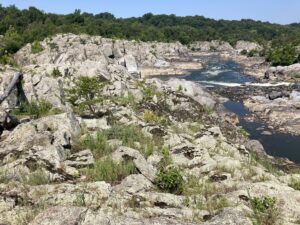Help Preserve and Protect Rare, Threatened, and Endangered Plant Species
in the C&O Canal National Historical Park
A Biodiversity Treasure in Peril
The C&O Canal National Historical Park (NHP) is beloved by millions for its natural beauty, rich recreational opportunities, and accessibility for millions of visitors. What is less well known is that it is one of the most biologically diverse national parks in the nation. Since its creation in 1971, over 1,500 plant species have been identified in the Park, including over 200 rare, threatened, or endangered (RTE) plants, some of which are globally rare and unique. But that number appears to be dwindling. Between 2008 and 2021, just over 100 previously identified RTE species were found along the C&O Canal. The remaining plants are likely now locally extinct. Invasive non-native plants, regional urbanization, and surging visitation have all taken their toll on the fragile habitats that make such diversity possible. The National Park Service (NPS) is facing complex challenges to conserve this national biodiversity treasure. Its ability to meet these challenges, however, is severely impacted by capacity constraints resulting from ongoing shortfalls in the NPS operating budget.






